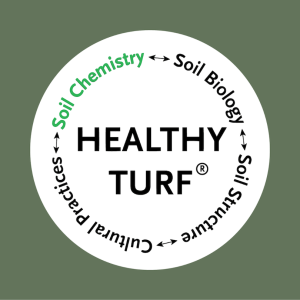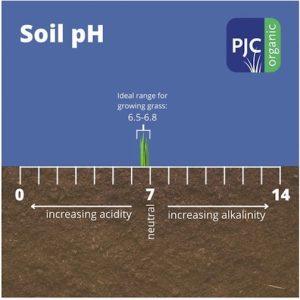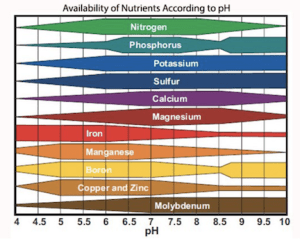7 Minute Read
 Last week, our blog detailed what PJC’s Healthy Turf Circle is and why it’s important in organic turf care. The first component of our diagram involves soil chemistry and turf. Here, we are looking primarily to influence the pH of the soil. From there, we can better influence the soil nutrients and their bioavailability to the turf plant. Potential Hydrogen (pH) is a way to measure soil acidity, neutrality or alkalinity.
Last week, our blog detailed what PJC’s Healthy Turf Circle is and why it’s important in organic turf care. The first component of our diagram involves soil chemistry and turf. Here, we are looking primarily to influence the pH of the soil. From there, we can better influence the soil nutrients and their bioavailability to the turf plant. Potential Hydrogen (pH) is a way to measure soil acidity, neutrality or alkalinity.

Acidic soils are 6.9 and below, neutral is 7.0 and alkaline is 7.1 and above. In the Northeast, our native soils tend to be acidic. For turf grass, we consider 6.2-6.9 to be an acceptable range while 6.5-6.8 is ideal. This is important because the bioavailability of plant nutrients increases tremendously when soil pH is in this range. The Availability of Nutrients According to pH illustrates the availability of nutrients in the soil across the pH spectrum. As you can see, every nutrient is abundantly available at a 6.5 pH.

Plant Nutrients
Plants require 16 essential nutrients and they are broken into two categories: macro nutrients and micro nutrients. Plants need macro nutrients in large quantities and with greater frequency. The main three are easily recognized on any fertilizer label, Nitrogen (N), Phosphorous (P) and Potassium (K). The secondary macronutrients are Sulfur (S), Calcium (Ca), and Magnesium (Mg). The non-mineral macro nutrients are carbon (C), hydrogen (H) and oxygen (O).
Plant micronutrients are required in lower quantities but are needed for various systems within the plant. They are Iron (Fe), Manganese (Mn), Boron (B), Copper (Cu), Zinc (Zn), Chlorine (Cl), and Molybdenum (Mo). These chemicals are almost always present in the soil but can be unavailable based on soil pH which is why being in the 6.5-6.7 range is so important.
Proven Products
When looking at soil chemistry and turf, getting pH in range is the most critical part of an organic turf care program. Therefore, PJC offers an OMRI listed High Efficiency Calcitic Lime with 2% Humic Chelating Agent that works faster and more efficiently than traditional pelletized lime to change the soil chemistry. The calcium carbonate alkalizes soil pH (Increases), while the humic chelating agent even furthers the availability of nutrients in the soil. Once pH is in range, nutrients become abundantly available, and the desired soil biology can proliferate.








